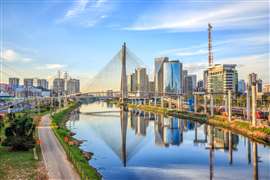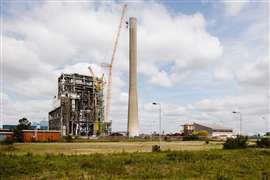Read this article in 中文 Français Deutsch Italiano Português Español
Study names the ten cities with the ‘smartest’ infrastructure
09 October 2025
The world’s megacities have had the intelligence and resilience of their infrastructure ranked, with London in the UK, Paris in France and Sao Paulo in Brazil coming out as the top three cities.
 São Paulo, Brazil, ranks third in the study on the intelligence of infrastructure in the world’s mega cities. Image: Adobe Stock
São Paulo, Brazil, ranks third in the study on the intelligence of infrastructure in the world’s mega cities. Image: Adobe Stock
The data – which has been compiled by Safwan Bashundhara Global (SBG) – looks at megacities around the world. According to the UN, megacities have a total population of over 830 million.
London scored as the highest megacity with the strongest infrastructure and high resilience, scoring 9.35/10. Despite scoring the lowest overall for air quality (0.04/10), the UK’s capital has the highest environment infrastructure score in the top ten (9.17/10).
Paris follows closely behind London in second place. France’s capital scores second highest in the top ten for mobility infrastructure, a positive score for its 11.3 million residents and marginally beats London in health service accessibility and air quality.
São Paulo, Brazil, ranks third. It scores poorly in environment infrastructure, but is third highest in the top ten for air quality (0.72), and marginally beats both London and Paris in health service accessibility (4.63/10). The city also has double the population of Paris, at 22.9 million.
The top ten megacities ranked by the intelligence of their nfrastructure are:
1) London, UK
3) Sao Paulo, Brazil
4) Dar es-Salaam, Tanzania
5) Kinshas, DR Congo
6) Bogota, Colombia
7) Rio de Janiro, Brazil
8) Buenos Aires, Argentina
9) New York, US
10) Bengalur, India
Methodology of findings
The study identified six key dimensions of urban infrastructure, environment, and resilience, balancing data availability, comparability across cities, and public relevance. Indicators were grouped into the following categories:
- Environment Infrastructure – greenness of built-up areas, green area coverage, and population access to green zones.
- Air Quality – emissions of CO₂, GHG, NOx, and PM2.5.
- Natural Risk Exposure – exposure to floods, coastal flooding, earthquakes, and low-elevation zones.
- Healthcare Accessibility – per capita hospitals/pharmacies and population share within 1km of these facilities.
- Mobility Infrastructure – road length, road density, congestion %, and average travel time per 10km.
- Urban Growth Pressure – population growth rate as a proxy for future infrastructure strain.
STAY CONNECTED


Receive the information you need when you need it through our world-leading magazines, newsletters and daily briefings.
CONNECT WITH THE TEAM











